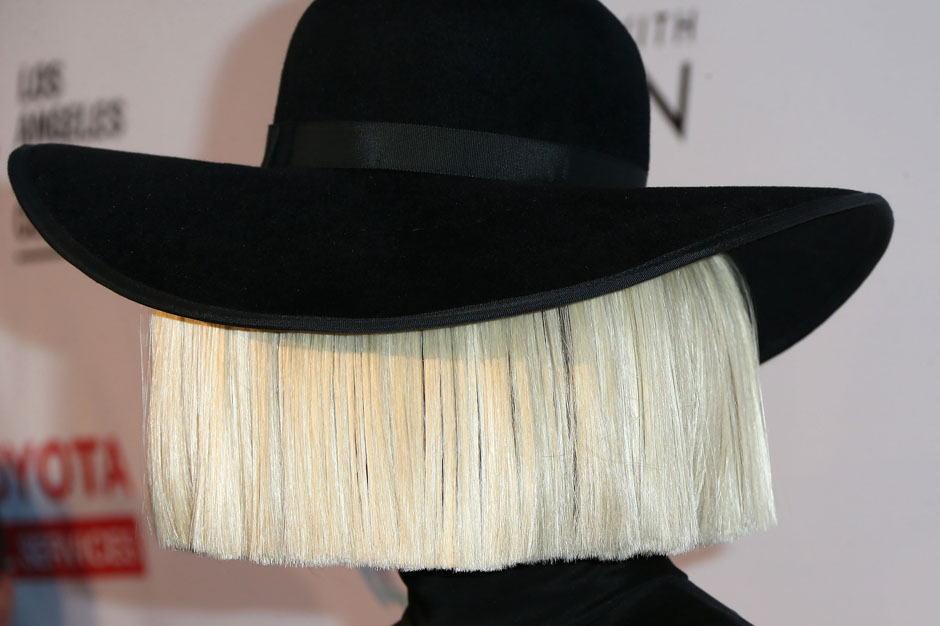Pop sensation Sia Furler will soon release her seventh studio album, This Is Acting — a collection of songs originally written for other artists. It’s a hotly anticipated project, and understandably so: The immense critical success behind 2014’s 1000 Forms of Fear, its millions-selling single “Chandelier,” and Sia’s atypical television “appearances” made her name synonymous with pop music. Her current visibility is a real achievement for the 40-year-old Australian singer, who was also SPIN‘s 2014 Artist of the Year, considering how many years she spent under the radar both as a solo artist and teammate; she began her career in the ’90s with the now-defunct acid-jazz group Crisp and singing backup for Jamiroquai, and she regularly lent her voice to downtempo staples Zero 7 in the ’00s.
Despite releasing five solo records between 1997 and 2010, Sia’s original work actually didn’t dominate the radio until after she began churning out smash hits for a number of Top 40 icons (Britney Spears’ “Perfume,” Beyoncé’s “Pretty Hurts,” and Rihanna’s “Diamonds” are all Sia-stamped). Once listeners connected her name to pop royalty (and after David Guetta released the soaring club anthem “Titanium” in 2012, featuring her vocals), the rest is very recent history: the aforementioned “Chandelier,” and 1000 Forms of Fear, face-shielding wigs to protect her privacy, and soon, This Is Acting.
So, as we get ready for another chapter of Sia’s story, we decided to take a brief look into her diverse two decades as a singer-songwriter. Below, SPIN gives you a primer on Sia’s early work and lesser-known (but still vital) co-writes.
Sia Deep Cuts & Collaborations
Crisp, “Rising and Falling” (Word and the Deal, 1996)
When Sia left high school in 1994, she began gigging around Adelaide’s local acid-jazz scene and teamed up with a group called Crisp. Lending her voice to the band’s only two records, Word and the Deal (1996) and Delirium (1997), a teenaged Sia takes the chorus on “Rising and Falling,” a horn-led, bass-backed jam about personal victories and failures. “I’m rising, I’m falling, more of the same,” she croons in between rapped verses, before tackling the bridge. The sax riffs on “Rising and Falling” go heavy on the cheese and its wannabe-Red Hot Chili Peppers spoken-word foundation might scream ’90s trend, but the time Sia spent with Crisp laid the groundwork for her trip-hop solo work and role singing backup for fellow jazz heads Jamiroquai.
Zero 7, “Destiny” (Simple Things)
Before you ask, no, Sia’s voice does not appear on “In the Waiting Line” (one of the few pillars of the Garden State soundtrack that James Mercer didn’t write) — that was British vocalist Sophie Barker. But Sia’s trilling voice did find an audience when the harmonizing “Destiny” was selected for early-’00s placement in Hollywood fare like Blue Crush and Raising Helen, as well as the supernatural WB series Roswell. Lowering her typically high register to match Zero 7’s placid tone, Sia sings of being separated from someone who is, as the title suggests, The One. Even when she’s lonely and “watching porn [in her] hotel dressing gown,” it’s all right — she still “draws strength from you.” The lesson here: Think about playing “Destiny” for your partner should they ever catch you browsing the “wrong” website.
Zero 7, “Distractions” (Simple Things, 2001)
Another Sia-led cut from Zero 7’s first studio album, “Distractions” outlines the singer’s anxieties around the idea of a permanent partnership (“Fancy a big house / Some kids and a horse / I cannot quite, but nearly / Guarantee, a divorce”). Mirroring repressed second thoughts, the orchestration starts out slow and soft but soon swells to climax with a fusion of acoustic guitar, layered strings, plush synths, and Sia’s aching voice crying, “I love yoooo-oooouu!”
Criminally Overlooked Sia Co-writes
Kylie Minogue, “Sexercise” (Kiss Me Once, 2014)
One of Sia’s greatest selling points is her impressive roster of co-writes. Though she’s widely known to have written for Britney Spears and Rihanna, plus Lea Michele (“Cannonball”) and Ne-Yo (“Let Me Love You”), this sensual Kylie Minogue track from 2014 is worth multiple listens. It cheekily recalls a pop classic by fellow Australian Olivia Newton-John, “Let’s Get Physical,” and updates it for the 21st century with a series of club-friendly drops. “Feel the burn,” indeed.
Carly Rae Jepsen, “Boy Problems” (E•MO•TION, 2015)
At first glance, this Sia co-write — which nearly got cut from Carly Rae Jepsen‘s celebrated sophomore record — appears to rehash the tired subject of whether or not to break up with one’s partner. And it does, to an extent — Sia opens the song with an exasperated “Listen, just leave or stay… But I’m done listening to it.” But there’s a second, less-heard theme at work here: losing your best female friend over too much useless relationship talk. “And I know that she’s right and I should not be offended / Yeah, I know what it looks like from the outside,” Jepsen chirps against ’80s synths and a funky bass line, trying to reconcile the song’s titular issue. Don’t worry, Carly, Sia’s here to help. Until she’s not.
Celine Dion, “Loved Me Back to Life” (Loved Me Back to Life, 2013)
An iconic vocalist like Dion is the ideal client for a songwriter like Sia (who, to be fair, has her own set of inimitable pipes). True to form, the Montreal native does justice to her 11th album’s title track. Meeting each far-ranging note, Dion backs herself up with some hooky “ay ay ay ay“s that move “Loved Me Back to Life” away from her balladeering past. Now, as the singer mourns the loss of her late husband, René Angélil, this song feels especially poignant, with Dion recounting how her partner “stood by [her] side night after night, night after night.”
Sia’s Pre-“Chandelier” Solo Work
“Breathe Me” (Colour the Small One, 2004)
In terms of what many post-“Chandelier” Sia fans know of her earlier work, 2004’s ugly-cry ballad “Breathe Me” is arguably the most revered. Chalk that up to its prominent placement on the final episode of HBO funeral drama Six Feet Under, which has frequently been discussed as the best television finale of all time. Led by light piano chords and a barely audible sigh, the track features some of Sia’s most haunting vocals, as she begs for someone to “be my friend” despite the fact that she’s “lost herself and is nowhere to be found.” Her pleas come accompanied by straining strings, giving the listener a sense that everything they know can break apart at any second.
“Buttons” (Some People Have Real Problems, 2008)
Today, Sia’s known for music videos including everything but her face. Her “Buttons,” clip, though, is all face. “Buttons” earned a lot of attention in 2008 when its video had Sia — visible only from the neck up — singing straight into the camera, her face covered awkwardly with tape, then nearly asphyxiated with balloons and a series of plastic sheaths and panty hose fitted over her head. The disturbing imagery comes accompanied by a buoyant melody and a set of self-deprecating lyrics (“I’m no good for you”) advising anyone interested in her to “step away” because she’s “seeing ghosts in everything that [she does].” A little over two years later, Sia would contemplate suicide and recoil from the spotlight. Clearly, her demons were already visible in her work.
“Taken for Granted” (Healing Is Difficult, 2001)
Written during an era when Sia still appeared in her own music videos (the furry pink coat she wears in this one should be displayed in an early-’00s diorama), this 2000 single has its singer feeling sick of waiting for her boyfriend to show up places and call her when he says he will. “Now I’m sitting by the phone again / Waiting for your call / You’d said you’d phone at two / And it’s a quarter past four,” sings a jilted Sia over a set of shrill strings and a quickened trip-hop beat. She’s accepted this behavior in the past (“I’m waiting for you again,” she repeats over and over), but she’ll emotionally emancipate herself with a toughened exterior (“I’m too nice for my own good”) and a kibosh on all that waiting.





